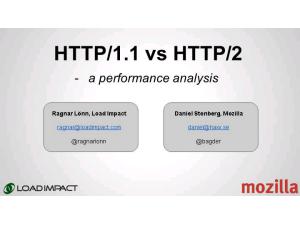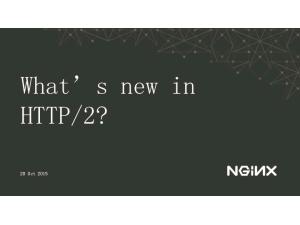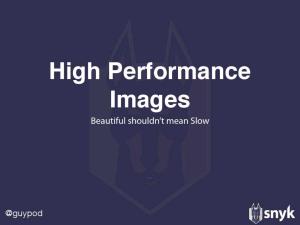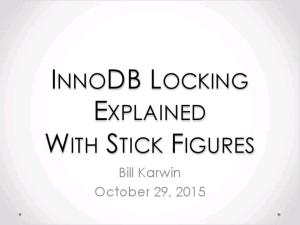- 本月热门
-
 Securing Web Apps with NGINX(使用nginx保护你的web应用) by Stephan Ilyin
Securing Web Apps with NGINX(使用nginx保护你的web应用) by Stephan Ilyin -
 HTTP1.1 vs HTTP2 a performance analysis(HTTP2比HTTP1性能提高66%) by mozilla
HTTP1.1 vs HTTP2 a performance analysis(HTTP2比HTTP1性能提高66%) by mozilla -
 Modern Web Development In 2015(2015年的web开发php,.net,java热度持续下降,node.js,golang持续上升 by VũNguyễn
Modern Web Development In 2015(2015年的web开发php,.net,java热度持续下降,node.js,golang持续上升 by VũNguyễn -
 微信公众账号开发入门
微信公众账号开发入门 -
 写作即编程(Markdown标记语言简介及使用教程) by 黄增光
写作即编程(Markdown标记语言简介及使用教程) by 黄增光 -
 What’s new in HTTP2(HTTP2.0的新功能) by NGINX
What’s new in HTTP2(HTTP2.0的新功能) by NGINX -
 High Performance Images Beautiful shouldn’t mean Slow(图片加载速度优-美丽不一定就必然慢) by guygod
High Performance Images Beautiful shouldn’t mean Slow(图片加载速度优-美丽不一定就必然慢) by guygod -
 Ruby China背后的故事 by 李华顺
Ruby China背后的故事 by 李华顺 -
 INNODB LOCKING EXPLAINED WITH STICK FIGURES(详解InnoDB的锁机制) by Bill Karwin
INNODB LOCKING EXPLAINED WITH STICK FIGURES(详解InnoDB的锁机制) by Bill Karwin -
 Learn Nginx in 90 minutes(90分钟学会Nginx) by Larry cai
Learn Nginx in 90 minutes(90分钟学会Nginx) by Larry cai
加收藏
Let BI Drive BI A vision for a BI Driven World(一个由大数据商业智能驱动的世界) by Barbara Horne
第1页
Let BI Drive
第2页
Let BI Drive BI A vision for a BI Driven World
In 2020 the world will generate 50 times the amount of data as in 2011. And 75 times the number of information sources (IDC, 2011).
In 2020 the world will generate 50 times the amount of data as in 2011. And 75 times the number of information sources (IDC, 2011).
第3页
Let BI Drive BI A vision for a BI Driven World
Process improvement tools filled the gap in moving to the right BI Strategy.
Process improvement tools filled the gap in moving to the right BI Strategy.
第4页
Let BI Drive BI A vision for a BI Driven World
Process improvement tools filled the gap in moving to the right BI Strategy.
Process improvement tools filled the gap in moving to the right BI Strategy.
第5页
Let BI Drive BI A vision for a BI Driven World
We strive to develop BI strategies that Harnesses the power of our data to drive our business with the touch of finger and brilliant analysis.
We strive to develop BI strategies that Harnesses the power of our data to drive our business with the touch of finger and brilliant analysis.
第11页
"Cross Mobile“ Pentaho
MongoDB
useful in routing time sensitive information that can be distributed across servers
DRIVE DISCOVER REALIZE INNOVATE VERIFY ESTABLISH
MongoDB
useful in routing time sensitive information that can be distributed across servers
DRIVE DISCOVER REALIZE INNOVATE VERIFY ESTABLISH
第15页
“Beans and Leaves“ Tableau
Cloudera SAP
Google Analytics
Cloudera SAP
Google Analytics
第16页
DRIVE DISCOVER REALIZE INNOVATE VERIFY ESTABLISH
第18页
"Cross Mobile“ Pentaho and Hadoop
Oracle
Data Warehouse
Oracle
Data Warehouse
第23页
"Cross Mobile“ Pentaho
SAP
Data warehouse Solutions
DRIVE DISCOVER REALIZE INNOVATE VERIFY ESTABLISH
SAP
Data warehouse Solutions
DRIVE DISCOVER REALIZE INNOVATE VERIFY ESTABLISH
第24页
LSS Lean Six Sigma Tool(s)
Lean Six Sigma Tools and Techniques
BI Business Intelligence Tool(s)
Business Intelligence Tools and Techniques
LSS and BI comes together because the advent of Big Data tools creates an opportunity to control the flow of data for better insight .
Lean Six Sigma Tools and Techniques
BI Business Intelligence Tool(s)
Business Intelligence Tools and Techniques
LSS and BI comes together because the advent of Big Data tools creates an opportunity to control the flow of data for better insight .
第28页
Can the solution easily withstand change?
第30页
Business Intelligence Tools and Techniques
Business Intelligence is a wide term, we are using it to describe a strategy that brings together the right tools to push and pull your data through streamlined processes and let the business stay aligned with the needs of the customer. We are also pushing a dashboard driven strategy that empowers each employee to visualize and utilize the data they need to stay aligned with the business objectives.
Business Intelligence is a wide term, we are using it to describe a strategy that brings together the right tools to push and pull your data through streamlined processes and let the business stay aligned with the needs of the customer. We are also pushing a dashboard driven strategy that empowers each employee to visualize and utilize the data they need to stay aligned with the business objectives.
第31页
Voice of Business
Voice of Customer VOC
Voice of Customer VOC
第32页
Questions? More Information?
@LetBIDrive
@LetBIDrive
第33页
How Do We Get There – DRIVE Innovate with Hadoop
“At its core, Hadoop is a distributed data store which provides a platform for implementing powerful parallel processing frameworks on it. The reliability of this data store when it comes to storing massive volumes of data couple with its flexibility related to running multiple processing frameworks makes it an ideal choice as the hub for all your data”
DRIVE DISCOVER REALIZE INNOVATE VERIFY ESTABLISH
“At its core, Hadoop is a distributed data store which provides a platform for implementing powerful parallel processing frameworks on it. The reliability of this data store when it comes to storing massive volumes of data couple with its flexibility related to running multiple processing frameworks makes it an ideal choice as the hub for all your data”
DRIVE DISCOVER REALIZE INNOVATE VERIFY ESTABLISH
第34页
About Pig and PigLatin
“For those of you who are not familiar with Pig, it is a platform for analyzing large data sets. It is built on Hadoop and provides ease of programming, optimization opportunities and extensibility. Pig Latin is the relational data-flow language and is one of the core aspects of Pig.”
“For those of you who are not familiar with Pig, it is a platform for analyzing large data sets. It is built on Hadoop and provides ease of programming, optimization opportunities and extensibility. Pig Latin is the relational data-flow language and is one of the core aspects of Pig.”
第35页
About Hive
The Apache Hive ™ data warehouse software facilitates querying and managing large datasets residing in distributed storage. Hive provides a mechanism to project structure onto this data and query the data using a SQL-like language called HiveQL. At the same time this language also allows traditional map/reduce programmers to plug in their custom mappers and reducers when it is inconvenient or inefficient to express this logic in HiveQL.”
The Apache Hive ™ data warehouse software facilitates querying and managing large datasets residing in distributed storage. Hive provides a mechanism to project structure onto this data and query the data using a SQL-like language called HiveQL. At the same time this language also allows traditional map/reduce programmers to plug in their custom mappers and reducers when it is inconvenient or inefficient to express this logic in HiveQL.”
第36页
Data Warehousing
Data warehousing incorporates data stores and conceptual, logical, and physical models to support business goals and end-user information needs. A data warehouse (DW) is the foundation for a successful BI program.
Creating a DW requires mapping data between sources and targets, then capturing the details of the transformation in a metadata repository. The data warehouse provides a single, comprehensive source of current and historical information.
Data warehousing techniques and tools include DW appliances, platforms, architectures, data stores, and spreadmarts; database architectures, structures, scalability, security, and services; and DW as a service.
Data warehousing incorporates data stores and conceptual, logical, and physical models to support business goals and end-user information needs. A data warehouse (DW) is the foundation for a successful BI program.
Creating a DW requires mapping data between sources and targets, then capturing the details of the transformation in a metadata repository. The data warehouse provides a single, comprehensive source of current and historical information.
Data warehousing techniques and tools include DW appliances, platforms, architectures, data stores, and spreadmarts; database architectures, structures, scalability, security, and services; and DW as a service.
第37页
HDFS
Hadoop Distributed File System (HDFS). Data in a Hadoop cluster is broken down into smaller pieces (called blocks) and distributed throughout the cluster. In this way, the map and reduce functions can be executed on smaller subsets of your larger data sets, and this provides the scalability that is needed for big data processing.
Hadoop Distributed File System (HDFS). Data in a Hadoop cluster is broken down into smaller pieces (called blocks) and distributed throughout the cluster. In this way, the map and reduce functions can be executed on smaller subsets of your larger data sets, and this provides the scalability that is needed for big data processing.
第38页
DOMO
第39页
HDFS
Hadoop Distributed File System (HDFS). Data in a Hadoop cluster is broken down into smaller pieces (called blocks) and distributed throughout the cluster. In this way, the map and reduce functions can be executed on smaller subsets of your larger data sets, and this provides the scalability that is needed for big data processing.
Hadoop Distributed File System (HDFS). Data in a Hadoop cluster is broken down into smaller pieces (called blocks) and distributed throughout the cluster. In this way, the map and reduce functions can be executed on smaller subsets of your larger data sets, and this provides the scalability that is needed for big data processing.
第40页
Cluster
Group of independent servers (usually in close proximity to one another) interconnected through a dedicated network to work as one centralized data processing resource. Clusters are capable of performing multiple complex instructions by distributing workload across all connected servers. Clustering improves the system's availability to users, its aggregate performance, and overall tolerance to faults and component failures. A failed server is automatically shut down and its users are switched instantly to the other servers.
Group of independent servers (usually in close proximity to one another) interconnected through a dedicated network to work as one centralized data processing resource. Clusters are capable of performing multiple complex instructions by distributing workload across all connected servers. Clustering improves the system's availability to users, its aggregate performance, and overall tolerance to faults and component failures. A failed server is automatically shut down and its users are switched instantly to the other servers.
第41页
MongoDB and Map Reduce
MongoDB is a document database that provides high performance, high availability, and easy scalability. A MapReduce program is composed of a Map() procedure that performs filtering and sorting (such as sorting students by first name into queues, one queue for each name) and a Reduce() procedure that performs a summary operation (such as counting the number of students in each queue, yielding name frequencies). The "MapReduce System" (also called "infrastructure" or "framework") orchestrates the processing by marshalling the distributed servers, running the various tasks in parallel, managing all communications and data transfers between the various parts of the system, and providing for redundancy and fault tolerance. http://www.mongodb.org/about/introduction/
MongoDB is a document database that provides high performance, high availability, and easy scalability. A MapReduce program is composed of a Map() procedure that performs filtering and sorting (such as sorting students by first name into queues, one queue for each name) and a Reduce() procedure that performs a summary operation (such as counting the number of students in each queue, yielding name frequencies). The "MapReduce System" (also called "infrastructure" or "framework") orchestrates the processing by marshalling the distributed servers, running the various tasks in parallel, managing all communications and data transfers between the various parts of the system, and providing for redundancy and fault tolerance. http://www.mongodb.org/about/introduction/
